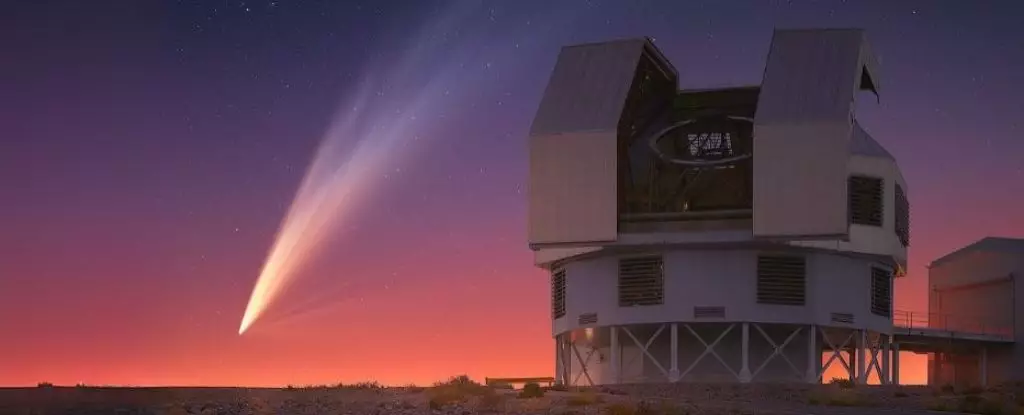As enthusiasts look skyward, the presence of comets offers a unique spectacle that captivates humanity’s fascination with the universe. Among these intriguing traveling entities is Comet C/2024 G3 ATLAS, recently spotlighted in our celestial observations. While the thrill of tracking a comet comes with a degree of unpredictability, G3 ATLAS has captivated astronomers and stargazers alike. This article provides an in-depth exploration of Comet G3 ATLAS—its discovery, characteristics, and the journey it undertook as it made its perilous pass near the Sun.
On April 25, 2024, the Asteroid Terrestrial-impact Last Alert System (ATLAS) survey unearthed Comet G3 ATLAS. The comet emerged with promise, igniting curiosity about its potential brilliance as it approached perihelion—the point where it would come closest to the Sun. As the comet normalized its trajectory toward perihelion set for January 13, 2025, a feeling of anticipation and apprehension loomed over the astronomical community. Throughout history, the sky has presented its share of disappointments and delights. Notable had been the spectacular display of Comet C/2012 S1 ISON, which disintegrated during its much-anticipated perihelion, contrasting with the survival of W3 Lovejoy, which performed a remarkable feat surviving a close encounter with the Sun.
G3 ATLAS achieved perihelion at a distance of 14 million kilometers from the Sun, indicating a close encounter that threatened to reshape its structure. Observations from the Solar and Heliospheric Observatory’s (SOHO) LASCO C3 imager noted this comet gleaming at an impressive magnitude of -3.8. Such brightness positions G3 ATLAS in the ranks of past notable comets, like P1 McNaught, which adorned the skies in 2007.
However, the viewing experience was tinged with a sense of a missed opportunity for the northern observers. While the comet graced the southern hemisphere with its dusty tail and vibrant display, its appearance was much more fleeting for those situated north of the equator. The window of visibility was strikingly limited; it graced northern skies only briefly from January 8 to January 15, 2025. The excitement that southern observers experienced starkly contrasted with northern stargazers, who found themselves largely excluded from this cosmic event.
An intriguing aspect of G3 ATLAS was its tail—a spectacular extension that followed the comet on its outbound trajectory. The dynamics of comet tails are fascinating; solar winds push dust and ion tails away from the nucleus, creating what many enthusiasts refer to as a ‘blowback’ effect. Consequently, in a striking twist, the dust and ion tails often pave the way ahead of the comet rather than trailing behind it, adding an unusual visual dynamic to the pursuit of the comet.
However, the excitement surrounding G3 ATLAS took an unexpected turn. Observations following perihelion on January 18 revealed troubling signs—a perceived deterioration of the comet’s nucleus. Images hinted at a fading entity, thus earning G3 ATLAS an unfortunate label as a “headless comet,” with a vibrant tail still visible but detached from its nucleus. This transformation raises questions about the resilience of cometary bodies and the forces that govern their integrity as they engage in close solar encounters.
Although it may seem that Comet G3 ATLAS has seen better days, it still contributes to the ongoing narrative of comets’ journeys through the solar system. Originally on an inbound path of approximately 160,000 years, estimates suggest this comet may be on a longer outbound trajectory of around 600,000 years. The fragments that may remain of G3 ATLAS will certainly leave a mark as they sweep through the solar neighborhood once more, even if it takes generations to witness them again.
The celestial dance surrounding comets like G3 ATLAS engages not only amateur astronomers but also seasoned astrophotographers who brave the skies in search of the perfect shot. Such endeavors remind us of the charm and peril in the pursuit of these transient phenomena. As we find closure on the story of G3 ATLAS, many hope for continued celestial delights throughout 2025, fueling our curiosity and wonder about the vast, intricate cosmos that surrounds us.

